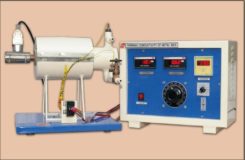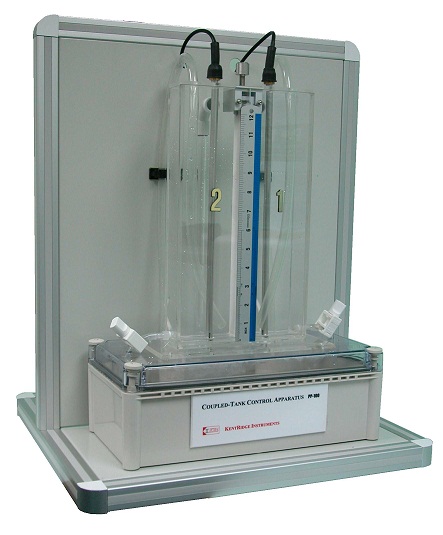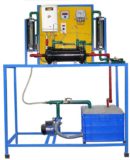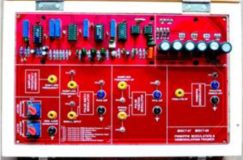Coupled Tank Apparatus Model PCT 115
Home » Products » Coupled Tank Apparatus Model PCT 115
Coupled Tank Apparatus Model PCT 115
Sci-tech Coupled Tanks Apparatus Model PCT 115 investigates basic and advanced control engineering principles. This includes the study of static and dynamic systems. It is also an ideal
system to use with other control strategies such as fuzzy logic.
The PCT 115 shows fluid transport and liquid level control problems in process control.
The basic control problem is to regulate the liquid level in one of the tanks by varying the speed of the circulating pump. The user guide includes experiments that cover system modelling using static and transient measurements, steady-state error analysis, transient response studies and Ziegler/Nichols tuning methods.
Item Description
Each tank has a level sensor that gives output signals proportional to the water level in each tank. A scale on each tank allows students to check the level-sensor calibration.
A variable-speed pump forces water into the left-hand tank. A valve connects this tank to a second tank, if needed, for two-tank experiments. A rotameter-type flow meter shows the flow rate. An electronic flow meter measures the flow rate.
The PCT 115MV Multivariable Coupled Tanks Apparatus gives extra experiments. It is similar to the PCT 115 but with a second pump and flow meter. This pump forces water into the right-hand tank and works independently of the other pump. This gives more advanced experiments into the principles of multivariable control (both pumps work together to give the correct levels in the two tanks simultaneously).
Technical Specifications
Inputs (0–10 VDC):
– Pump 1 speed
– Pump 2 speed (MV only)
Outputs (0–10 VDC):
– Flow1
– Level1
– Flow 2 (MV only)
– Level2
Accessories
• Connecting cables
• Liquid colouring
See also different:

Sci-tech Thermal Conductivity of Metal Bar Apparatus Model TH 007 explains practically that thermal conductivity is a physical property of material denoting the ease with a particular substance can accomplish the transmission of thermal energy [...]



